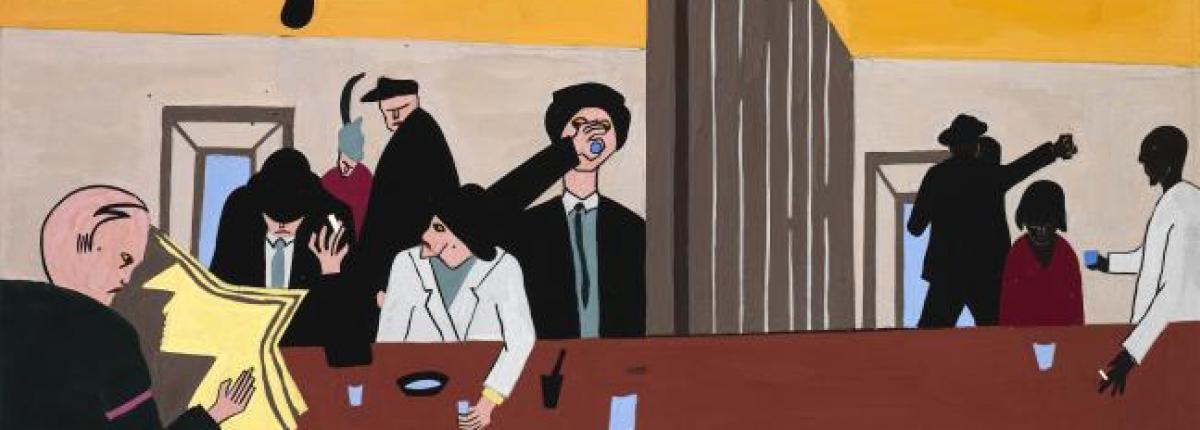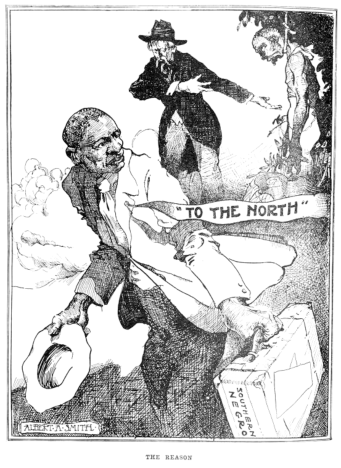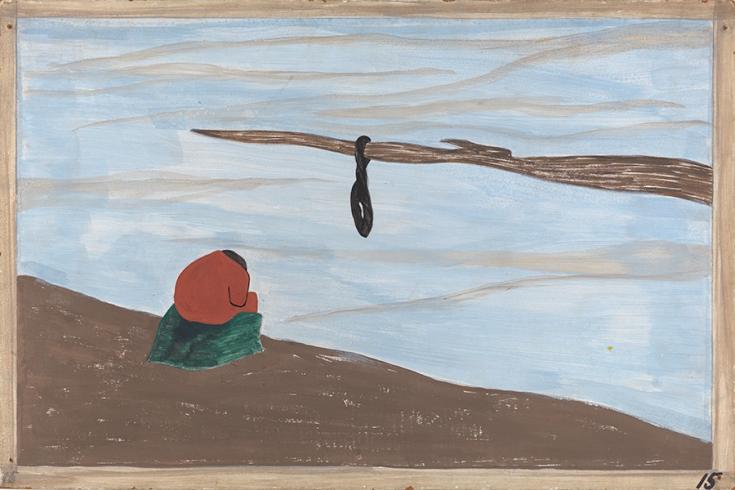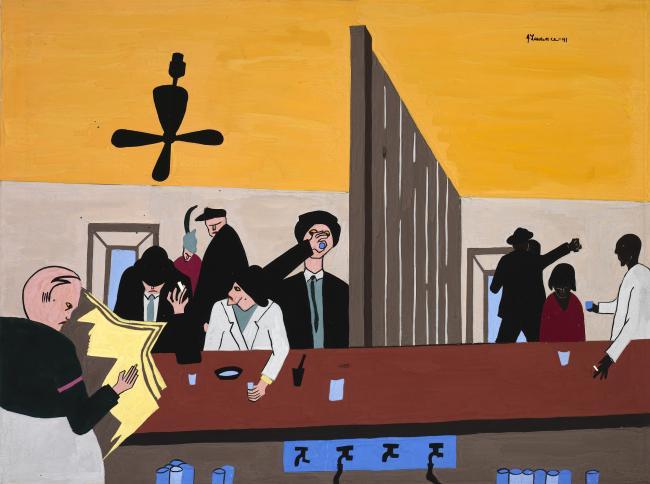Art as Activism

Part 1: The Great Migration - Building Historical Context
Introduce:
- Watch this short video on the Great Migration.
- Teacher’s Note: There may be some vocabulary you should pre-teach your students such as agrarian and bestiality. Pre-watch the video to determine what words your students may need to know beforehand. We have provided some vocabulary and their definitions below as well:
- Agrarian - the cultivation (preparing for crops) of land
- Bestiality - savagely cruel, or depraved, animal-like behavior
- Agency - the ability to exert power
- As students are watching the video, they should jot down their responses to the following questions:
- What was life like in the South for African Americans during the first half of the 20th century?
- Why did white Southerners worry about African Americans leaving?
- What was the Great Migration?
- Teacher’s Note: There may be some vocabulary you should pre-teach your students such as agrarian and bestiality. Pre-watch the video to determine what words your students may need to know beforehand. We have provided some vocabulary and their definitions below as well:
- Students should share their responses to these questions.
Discover:
- In pairs, have students study the following panels from The Migration Series: Panels no. 8, 9, 10, 11, 13, 15, 19, 22, 24. As they study the panels, students should discuss their responses to the following questions:
- What do you notice in each panel?
- What do the objects you see suggest about life for Black people?
- Based on their analysis of the panels, students should respond to the following questions:
- What specific factors contributed to the desire to move to the North?
- What issues did Black people in the South face to which Jacob Lawrence calls attention through his art?
Part 2: Art as Activism
Discuss:
- Explain to students that art can be a way to bring about social change. This is called activism.
- Engage in a facilitated discussion about social justice and activism. Students may need to conduct some research to answer these questions thoughtfully and to provide evidence-based answers. Use these questions as a guide:
- As a group, develop a shared understanding for the following terms. Encourage students that complex and open-ended meanings for the terms demonstrate the complexity of these topics.
- Social issues
- Social justice
- Social injustice
- What do you think are the responsibilities of individual people regarding issues of social justice?
- What are examples of social injustice?
- When do you think an individual should take a stand against social injustice?
- Who has the power to take a stand against social injustice?
- What are some ways you have power? What are some areas where you feel like you lack power?
- What are some ways we can take a stand against social injustices?
- As a group, develop a shared understanding for the following terms. Encourage students that complex and open-ended meanings for the terms demonstrate the complexity of these topics.
Explore:
- In the same pairs, students should study the following pieces of artwork from the 1920s through the 1940s. [Teacher’s Note: We acknowledge that all of the following artwork were created by Black male artists. Black female artists working from the 1920s through the 1940s focusing on issues of social injustice were less recognized.]
- The Reason by Albert Smith
- Panel 15 by Jacob Lawrence
- Bar and Grill by Jacob Lawrence
- Can Fire in the Park by Beauford Delaney
- While looking at the artwork, students should note:
- What do you see in each piece of art?
- What do the objects you see suggest about life for Black people?
- As students review these art pieces, they should discuss the following questions:
- What issue(s) do you think the artist is calling attention to through his art?
- In your opinion, what does this particular piece say about that issue?
- What have you learned about this issue through the artwork you studied?
- In your opinion, how is the art functioning as activism?
- In small groups, make a list of social issues that are prevalent in your 1) community, 2) city, and 3) country.
Part 3: Creating Activist Art
- From the lists they created, students should IDENTIFY a current social issue in their community, city, or country that is important to them.
- Once they have selected a social issue that either affects them or is important to them, students should select a way to shed light on this issue. They should feel free to choose an artistic medium that resonates with them.
- Examples of artistic expressions they might use include: writing, painting, poetry, collage, photography, comic strip/political cartoon, song, or any other idea the students might come up with.
- After students select how they want to create their artistic expression, they should do so keeping in mind how they want to clearly convey their message. They may want to consider incorporating possible solutions and opportunities for change or they may choose to focus on a more emotional response or personal narrative.
- After they’ve created their pieces, students should then write an artist statement. This statement should include:
- Their reason for choosing the social issue
- How their artwork represents the issue
- How their artwork might affect social change
Share:
- Create an art gallery for students to display their work. For any songs that are created, you can display just the lyrics or have a listening station.
- Conduct a gallery walk.
- After the gallery walk, each student should select a piece that resonated most deeply with them. In response to that piece they can choose to:
- Write a reflective poem about their emotional response to the piece
- Create a sketch of a possible solution to the problem raised in the piece
Additional Context
Lesson Context
In the 1920s, Harlem, a vibrant neighborhood in New York City was synonymous with an outpouring of production in the visual arts, music, literature, theater, and dance that some began referring to the creative era as the Harlem Renaissance. The artists strived to express their racial identity and pride. Artists such as Jacob Lawrence and Albert Smith used their art to shed light on and respond to issues that they faced as African Americans.
Key Terms
Activism: An action or series of actions that are implemented to bring about political or social change. Activism can take many forms and the primary goals are to 1) raise awareness about a political or social issue facing a community or group of people and 2) to influence and change policies and practices that create social or political injustices.
Harlem Renaissance: The largest concentration of African Americans who migrated during the Great Migration moved to Harlem. From the 1910s to mid-1930s, the neighborhood of Harlem in New York City became a hub of African American culture, with an explosion of literature, music, theater, and the arts.


